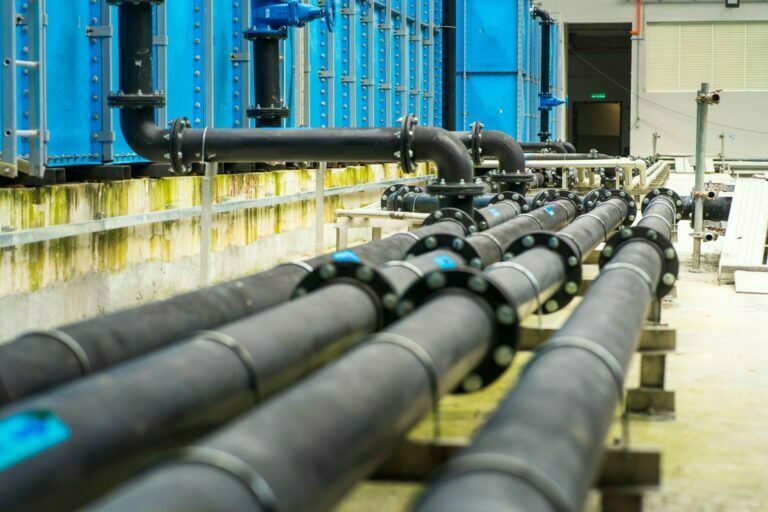Approaches to Hydrogen Sulfide (H2S) Management: The Role of Granular Media Systems
H2S is a colorless gas known for its pungent odor reminiscent of rotten eggs. While commonly associated with industrial processes, it is also a natural byproduct of organic matter decomposition. Effective management of this hazardous air pollutant is critical to ensure environmental safety and compliance with health standards. Granular media systems have emerged as a promising solution to capture and neutralize H2S emissions effectively. Below, we explore the critical role these systems play in industrial H2S management.
The Science Behind Granular Media Systems for H2S Removal

Granular media systems offer a mechanical means to filter H2S from gas streams, operating on the principles of adsorption and chemical reaction. These systems utilize solid media with high surface areas that capture H2S molecules, allowing them to react and bond on a molecular level. This process not only traps the H2S but also converts it into inert compounds that are less harmful to the environment.
The efficacy of these systems hinges on the appropriate selection of granular media, which can range from activated carbon to specialized impregnated compounds. The media are optimized for maximum H2S uptake, ensuring prolonged operational lifespans and minimal maintenance requirements. Importantly, these systems can be tailored to accommodate varying scales of H2S emissions, making them a versatile tool for diverse industrial applications.
Advanced granular media H2S removal system units have incorporated the latest scientific breakthroughs to enhance their performance metrics further. Innovations such as improved media formulations and system design refinements contribute to increased removal efficiencies and reduced operational costs. Stringent testing and quality control protocols ensure that these systems meet industry standards and regulatory compliance benchmarks.
Comparing Granular Media Systems With Other H2S Management Strategies
Granular media systems stand out among H2S removal technologies for several reasons. Unlike wet scrubbing techniques, they do not generate secondary waste streams that require further treatment or disposal. This key differentiation highlights the environmental and economic advantages of adopting granular media approaches for H2S management, as they offer a more sustainable and low-impact solution.
Chemical injection, another common H2S management strategy, involves injecting scavenger chemicals that react with H2S. While this approach is effective, it may not be as cost-effective or environmentally friendly over the long term compared to granular media systems. Moreover, there are concerns about the production of byproducts and the complexity of handling and storage of chemicals associated with this method.
Implementing Granular Media Systems for Optimal H2S Management

The successful implementation of granular media systems for H2S management is contingent on careful planning and system design. A thorough analysis of H2S concentration levels, flow rates, and environmental conditions is essential prior to installation. Customized system configurations can then be designed to match the specific requirements of a facility, ensuring optimal performance and efficiency.
Continuous monitoring plays a critical role in maintaining granular media systems at peak operating conditions. Sensors and control technology can fine-tune the system’s performance in real-time, adapting to any variations in H2S concentrations. Such proactive measures prolong the media’s life and safeguard against potential system overloads or breakthrough events.
Training for personnel is also paramount to ensure that the granular media system delivers its intended benefits. Educated operators will be adept at recognizing early signs of media exhaustion and carrying out routine maintenance procedures. This level of operational expertise aids in the prevention of downtime and maximizes the return on investment (ROI) for businesses deploying these systems.
Innovations and Future Trends in Granular Media Technology for H2S Control
The industry continues to evolve, driven by emerging technologies and a push for enhanced performance and sustainability. Innovations in granular media formulations are bringing new materials with higher adsorptive capacities and quicker reaction times to the forefront. These advancements promise to further augment the efficacy and longevity of H2S removal systems.
Another exciting development is the integration of smart sensors and artificial intelligence into the operation of granular media systems. These technologies enable dynamic monitoring and predictive analytics, paving the way for automated system adjustments and predictive maintenance. Through such advanced diagnostics, facilities can anticipate issues before they arise, ensuring uninterrupted H2S management.
Overall, granular media systems represent a progressive and adaptable approach to managing H2S emissions. The ongoing commitment to innovation and sustainability within this field is critical as industries worldwide strive to balance operational efficiency with environmental responsibility. Effective management of H2S not only protects the environment but also secures the well-being of communities and the longevity of industrial operations.




